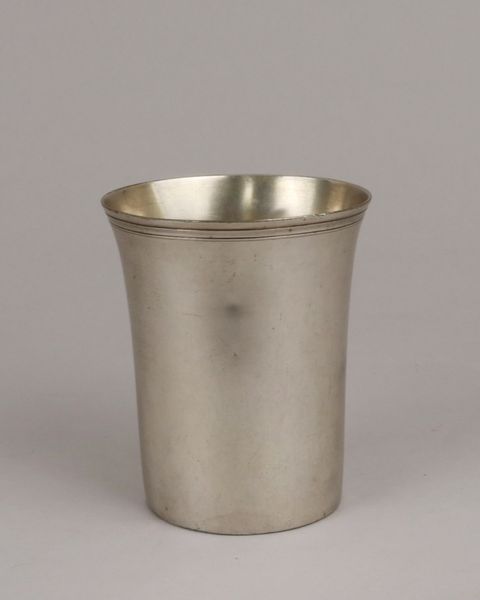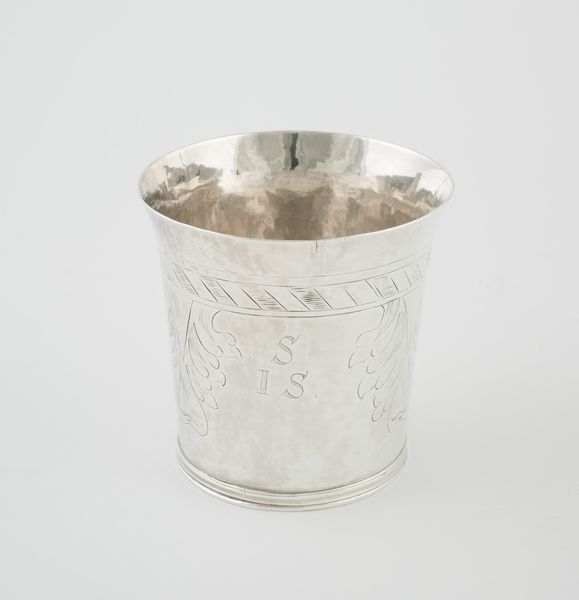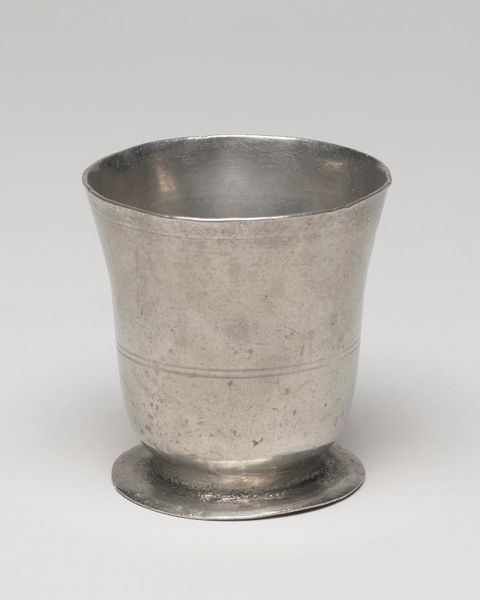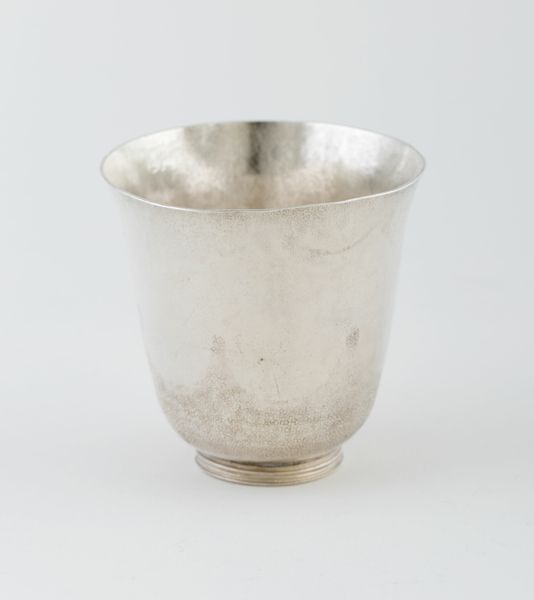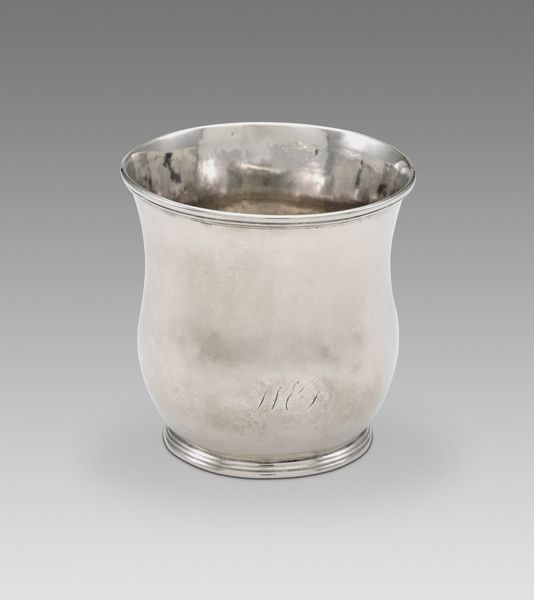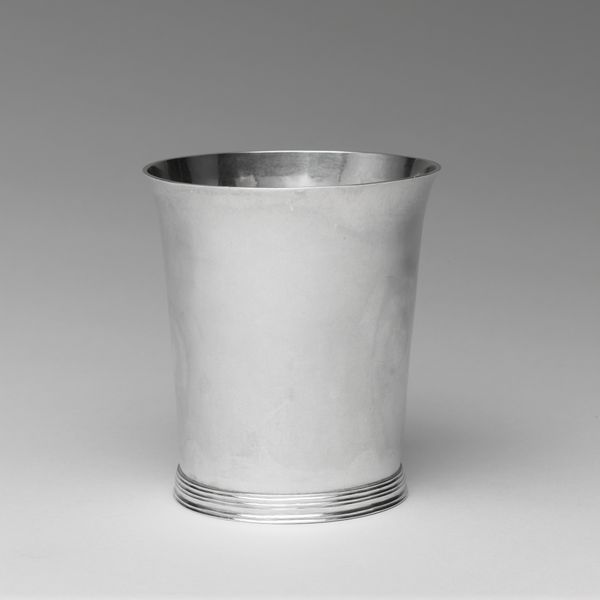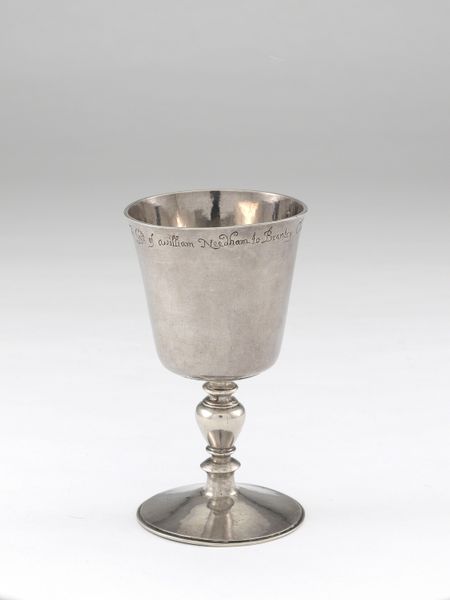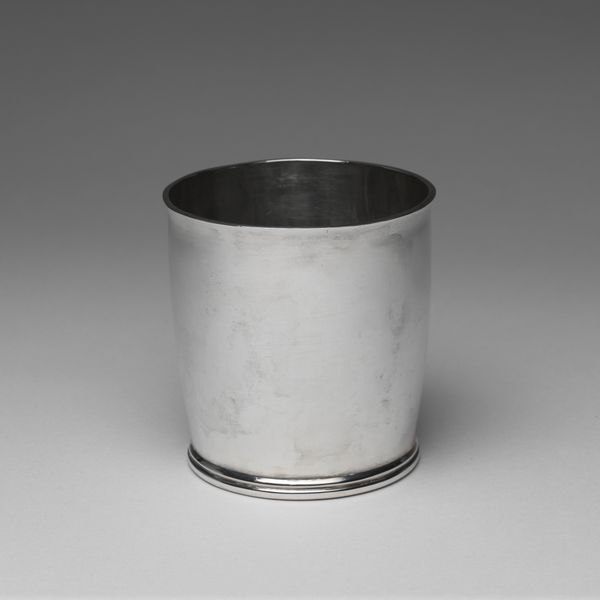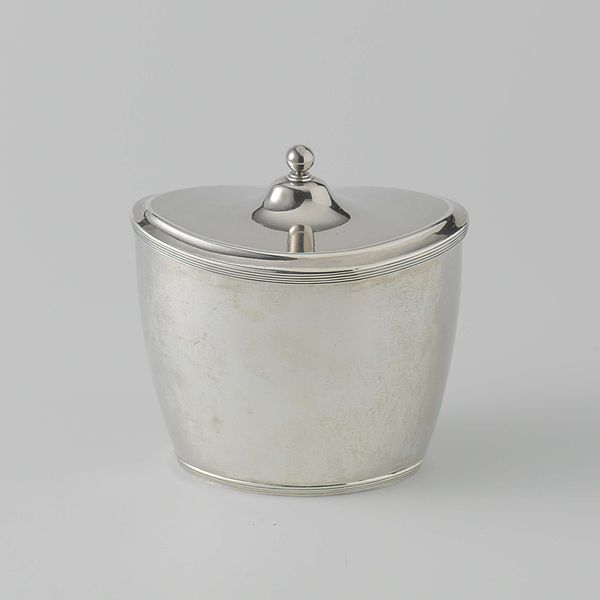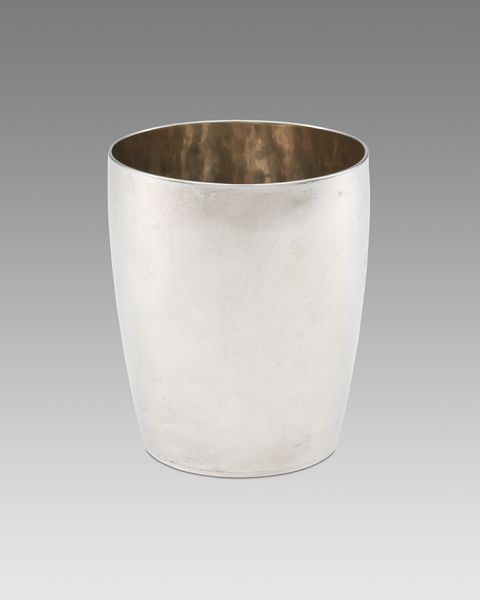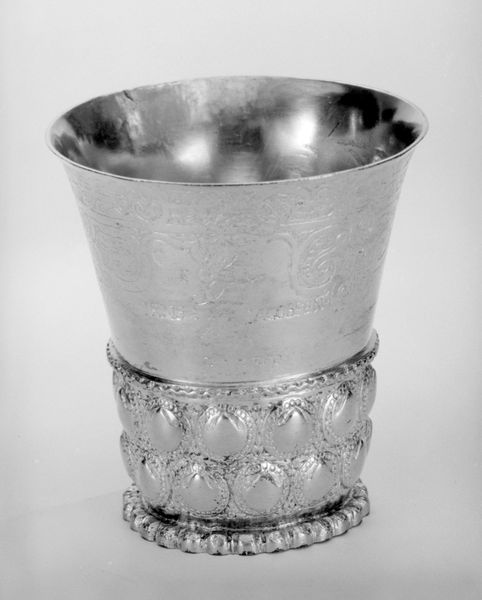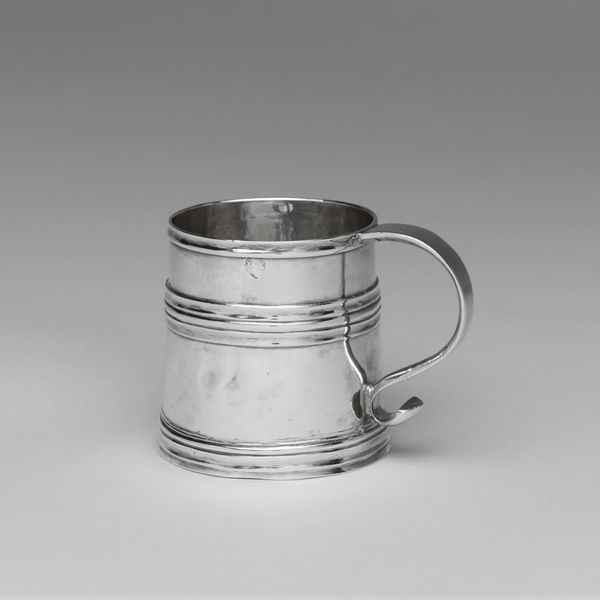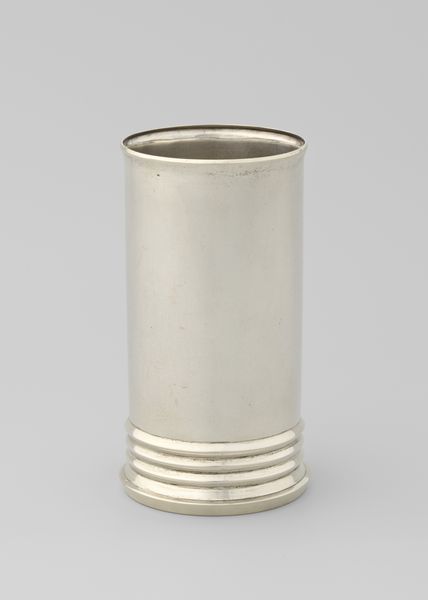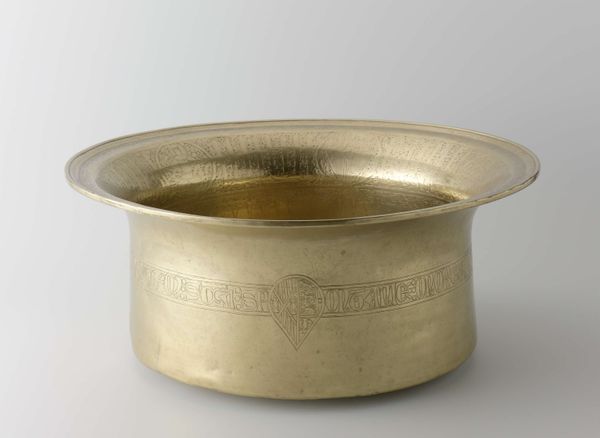
silver, metal, metalwork-silver, sculpture
#
neoclacissism
#
silver
#
metal
#
metalwork-silver
#
sculpture
#
ceramic
#
decorative-art
Dimensions: Overall: 3 1/4 × 3 in. (8.3 × 7.6 cm)
Copyright: Public Domain
Editor: So this is a silver beaker, made sometime between 1785 and 1799. It’s currently housed at the Met. It looks so…stark, almost austere. What do you see in it? Curator: Austere, yes, but I'd say intentionally so. Consider the period – Neoclassicism. A deliberate rejection of the excesses of the Rococo, fueled in part by Enlightenment ideals and, crucially, emerging democratic sensibilities. This isn't just a vessel; it’s a statement. What statement might it be making, do you think? Editor: Maybe a statement about value? Silver objects would have been owned by wealthy individuals. Even in its simplicity it is clearly expensive? Curator: Precisely. Think about the French Revolution unfolding during this period. Sumptuary laws and the critique of aristocratic extravagance were very much part of the cultural discourse. While the beaker signifies status through its material, its form, devoid of elaborate ornamentation, signals a shifting aesthetic—one attempting to reconcile luxury with a new moral order. What do you make of that tension? Editor: It’s really interesting! It’s almost like it's trying to have it both ways: wealth and restraint. Like saying "I’m rich, but I'm also one of the people." Curator: Exactly! And this speaks to a larger tension—how art and design reflect the complex interplay of politics, economics, and evolving social identities. Objects like these become powerful markers within those historical narratives. Editor: Wow, I wouldn't have considered any of that just by looking at it. I thought it was just a simple cup! Curator: And that’s precisely the point! It is precisely by seeing the historical, social, and theoretical complexity and symbolism that is hidden in plain sight within material objects that we engage in the type of critical looking and re-interpretation, and that helps shape a dialogue to view things differently.
Comments
No comments
Be the first to comment and join the conversation on the ultimate creative platform.
